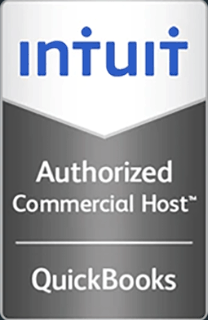Choosing the Right SharePoint Hosting Solution
SharePoint 2010 is the latest version of Microsoft’s collaboration and document management tool. Companies can use SharePoint to build and deploy web sites, collaboration workspaces, and document repositories, thereby allowing their employees to share information and access essential data. As a web-based system, SharePoint allows employees to connect, work together, and increase productivity, whether they are in different corners of the same building or on different parts of the planet.
Companies can take advantage of the following SharePoint features:
• integration with other Microsoft products such as Office and Exchange Server.
• hosting capabilities for the company intranet, extranet, and Internet sites.
• collaboration tools to connect project teams.
• content management system tools to manage documents from start to finish and share them with the appropriate personnel.
Three Options for Implementation
After deciding that SharePoint is a necessary business tool, the question of implementation remains. Companies have three options: self hosting, shared hosting, or virtual dedicated hosting.
Self Hosting
Companies could develop an in-house solution for hosting and maintaining SharePoint. The benefit of this option is that the company maintains complete control of the infrastructure. The IT department would purchase the hardware, setup the server room, and integrate the new SharePoint solution with the office’s existing systems and applications.
The downside to self hosting is enormous cost. Companies would need to invest a lot of capital in staffing, hardware, and licensing. For example, an average setup would include at least one dedicated server for SharePoint and possibly a second to run SQL. Each machine would typically need 8-core processors and 8GB of RAM. New equipment means a need for additional space, including room for power and cooling systems. In addition, the typical business Internet connection is not likely to be fast enough to handle all outside users to properly benefit from SharePoint’s offerings, so an upgrade is often necessary. In terms of software, SQL Standard Edition requires licensing for each individual user. And don’t forget about backup costs. Even for a small implementation, the average customer is looking at $5,000 for the proper hardware and software to avoid data loss. If the company lacks on-site IT support staff, the cost could double due to installation fees. All things considered, a company could find itself waiting weeks or months before SharePoint is fully operational.
Even after everything is installed, there is often no built-in protection from hardware failure and no clustering to guarantee servers stay online, meaning that the company may be faced with additional expenditures to quickly fix or replace equipment and avoid disruption of day-to-day operations.
Shared Hosting
Another option is for companies to purchase a shared SharePoint hosting solution from a third-party provider. The benefit of this option is that the company does not have to spend valuable resources and staff time to develop its own solution. There is little capital investment, no need to worry about licensing software, managing a backup strategy, or upgrading or replacing hardware (although the hosting provider may or may not cluster servers or provide guaranteed server uptime). A clear strength of hosting providers is that they offer good Internet connectivity. Since the infrastructure already exists, companies can be up and running in a few days or weeks. Typically, the hosting firm will also provide backup services and technical support, which is a definite plus.
The drawback to this option is that the hosting firm often uses a shared system with an existing database. This configuration can intermingle data from multiple clients on the same server. There are often negative impacts on performance that each company is powerless to resolve. If the company wants to migrate data to a new provider, the process is difficult and error-prone, which means portability is, for all intents and purposes, nonexistent. If the company wants to integrate into their own Exchange environment, they must host it in the same place, meaning that users must have accounts in their Active Directory and on one, distinct system. This restriction limits the company’s access to Active Directory management tools and hinders its ability to install any third-party applications that leverage SharePoint’s powerful capabilities.
Virtual Dedicated Hosting
Many companies find that the best solution is to implement a virtual dedicated SharePoint hosting solution. This option combines the benefits of self-hosting or shared-hosting solutions while eliminating the drawbacks of each. Each client connects to a virtual dedicated server with SQL and SharePoint, with access to Active Directory management tools and ability to integrate their local Active Directory and Exchange using a Virtual Private Network connection. Alternatively, the company can integrate an Exchange solution at the hosting company.
In essence, the look and feel is similar to a company hosting its own SharePoint solution, providing the desired functionality and flexibility while reducing cost and complexity. Benefits include:
• No large capital investment
• Simple subscription-based business model with ability to stop service at any time
• Reduced licensing costs
• Ability to install any 3rd party software
• Option to apply SQL server to other business uses
• Simple data migration if you want to move operations in-house or to another provider
• Protection from hardware failures or data loss
• Ability to adjust resources to improve performance
• Reduced in-house IT staff burdens and costs
• 100% uptime (when clustered using VMware)
• Excellent Internet connectivity (100Mbps or better)
Learn More
To learn more about setting up a dedicated SharePoint solution without the drawbacks of in-house costs, equipment purchasing, and licensing, contact Infinitely Virtual by phone at (866) 257-8455 or visit www.InfinitelyVirtual.com. Infinitely Virtual offers three different plans designed to meet the needs of any company.





